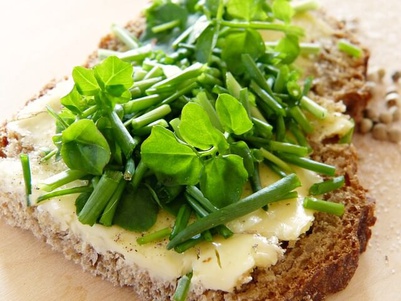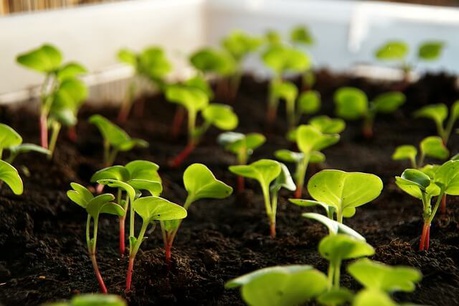From the point of view of antioxidants
Watercress belongs to the cruciferous family of plants that have excessively high levels of antioxidants which provides them with exceptional antioxidant levels. These antioxidant molecules are particularly active in combating the development of malignant cells as well as blood circulation problems. These include vitamin C and provitamin A, which protect, among other things, the strands of our DNA. These are usually damaged during the growth of cancer cells.
In addition, vitamin K has very positive effects on the elasticity of the vessels and the fixation of calcium in the bones.
The two main carotenoids, zeaxanthin and lutein, play a major role in protecting the cardiovascular system and vision.
More and more researchers are demonstrating the effectiveness of cress watercress in reducing colon, lung and prostate cancers. It certainly slows down the growth of certain cancer cells.

From the point of view of sulfur derivatives
The glucosinolates contained in these small pungent leaves are transformed into isothiocyanates and PEITC, these are the active ingredients that give it its characteristic pungent flavor. Once again, these are molecules recognized by scientists for their remarkable anti-cancer properties.
Evidence has been presented that ingestion of these isothiocyanates can stop the progression of breast, lung, throat, prostate and colorectal cancers.
In addition, PEITCs slow down or even stop phase I liver enzymes, which are responsible for the activation of carcinogenic substances. On the other hand, they induce the production of phase II enzymes responsible for the inhibition of toxins and the evacuation of carcinogenic substances.
Last but not least, from a DNA point of view
A team of researchers from the University of Ulster have published on the ability of this small plant to slow the progression of specific biomarkers known to be associated with cancer risk.
Their study is based on a sample of sixty people, men and women, thirty smokers and thirty non-smokers. Each absorbed 85 grams of raw cress daily for eight weeks.
After that time, the scientists analyzed a variety of interesting factors:
- The DNA of lymphocytes.
- and plasma levels of lutein, retinol, alpha-tocopherol and beta-carotene.

The results are surprising.
- damaged DNA has decreased by 17%.
- the levels of two antioxidants, alpha-tocopherol and beta-carotene, increased.
- beta-carotene also increased by 33%.
- and lutein for its part increases by 100%.
It is worth noting that in this study, smokers had better benefits than non-smokers in terms of protecting their DNA.
Some scientists consider this work involving cress watercress to be among the most compelling.
Another study conducted with extracts of cress from watercress and broccoli supports this. It shows that these vegetables may be effective in suppressing an enzyme known to promote the spread of breast cancer cells to other tissues.
Research involving cress isocyanates from watercress highlights that these molecules can outright suppress the formation of pro-inflammatory substances like prostaglandins. It is well known that an inflammatory terrain favors cancer activity.
In conclusion, cress of watercress thus has (among other things) two primary and rare functions: it prevents the formation of cancer cells and it slows the progression of cancers.
We can therefore only recommend that you regularly consume these small green leaves that do nothing but good.
Even in case of overconsumption, its multiple therapeutic properties are present.
Remember that to enjoy the benefits of this plant, it must be consumed raw. Any cooking can indeed reduce the proportions of the benefits of this exceptional plant.